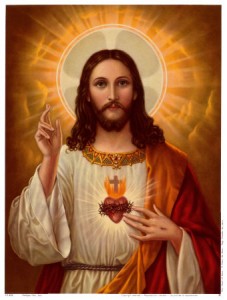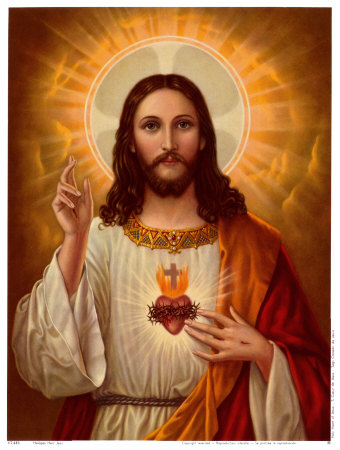 First, there was the Father, then the Logos [1], and finally the Holy Spirit, each following the other in a nanosecond, if there is such a thing as time in zero-dimensional space. The first thing the Logos did was bring forth the Son of Man and then the Christ Event. The Logos can be thought of as a triangle with its three points. At the base, the left point is the Son of God, and the right point is the Son of Man, which is a euphemism for human. The top point is the Christ Event.
First, there was the Father, then the Logos [1], and finally the Holy Spirit, each following the other in a nanosecond, if there is such a thing as time in zero-dimensional space. The first thing the Logos did was bring forth the Son of Man and then the Christ Event. The Logos can be thought of as a triangle with its three points. At the base, the left point is the Son of God, and the right point is the Son of Man, which is a euphemism for human. The top point is the Christ Event.
This triangle was brought forth by the Logos at the very beginning—before the beginning of time as we know it, before the beginning of creation itself which the Father brought forth. The Son of God we know; he is the second person of the Trinity and shares the same DNA as the Father, a DNA made up of Four Great Strands, one strand each for unbound free will, unbound reason, unbound power, and unbound service to others. Within the Logos, the Son of Man shares the same DNA as we humans, the double helix of human DNA. As human DNA, it is not some general grouping of genes, but genes in a specific arrangement. For the Son of Man is not a human in general, but a specific human, the human Jesus of Nazareth. The Christ Event is a triune event: the incarnation, death on the cross, and resurrection of this Jesus of Nazareth. The Christ Event was not a potentiality but an actuality in the Logos from the very beginning in zero-dimensional space. With the start of creation by the Father, it also became an actuality for us in our three-dimensional space, spanning a timeline in human history of approximately thirty years in the life of one Jesus of Nazareth. [2]
How does this triangle of the Logos relate to us? Draw the letter T. The top line of the T at the left end is the Father, at the right end, the Holy Spirit, and at the midpoint in the line, the Son of God. The vertical line down from the Son of God gives us the T. The top point of this vertical line is our starting point, the Son of God. The bottom point is the Christ Event, and the midpoint in the vertical line is the Son of Man, which is the human, Jesus of Nazareth, who played the three unique roles of incarnation, death on the cross, and resurrection as Risen Christ.
Now draw a horizontal line out from the Son of Man. We get the letter F. The starting point of this horizontal line is the Son of Man as the Risen Christ. We all, human and angel alike, are somewhere on that horizontal line. This line has its own name. It is the Body of Christ with the Risen Christ as its head, and we, human and angel alike, the other points on this line, His body. Note we are not on the top line, the Father, Son of God, and Holy Spirit line. We are not divine as divineness is defined on that line. We are on the Body of Christ line. We are divine in the sense that the Risen Christ is divine. The Apostle Paul did not say that God is in us, but rather that Christ is in us. Our divineness does not stop there, however, for the Risen Christ will lift up His Body to the Father. This lifting up implies that more divinity is in store for us. Is this lifting up like an elevator that reaches higher floors but never the top floor, the Father, Son of God, and Holy Spirit line? The Prodigal Son story seems to imply we do, in the end, reach the top floor. “Everything I have is yours,” says the father to his son in that story, and this means that the Father’s divinity is our divinity in the end.
But what is this divinity? Note that the Son of Man is part of the triangle that makes up the Logos. Does that make the Son of Man divine by definition? Is his divineness the same as the Son of God’s? Well, it depends on how we define divineness. If divineness is defined in terms of being, the answer is no. The divineness of the Son of God is defined by the omni words: omnipresent, omniscient, and omnipotent—far from what the Son of Man, or we, are. As creatures, human creatures, the Son of Man and we are the opposite of the omni words; we are the non-omni words. If there is one word that can describe a human being, it is the word frail. But frailness is not a liability as the human Christ has shown. This means that if we define divineness in terms of act instead of being, the Son of Man is just as divine as the Son of God. Why? Because they both acted the same throughout the Christ Event. More than acting the same, they acted as one Person. True, they had different natures, one human, the other divine, but these natures acted as one Person in Christ’s incarnation, death on the cross, and resurrection. They acted as one in their shared ministry to the people of Palestine. The Son of Man, then, is divine when divineness is defined in terms of act. How about us, the rest of humanity? Can we, too, be just as divine in act? The answer is yes, but only when we act as the Son of Man, this man Jesus of Nazareth, acted. When we act as him, we are just as divine as he. Our divineness is the same as the Son of Man and Son of God. It is a divineness of act. Note that our divineness is a contingent divineness. Once we stop acting like the man Jesus of Nazareth acted, our divineness goes away only to reappear again once we start acting like him again.
How about the rest of living things? Paul did not say Christ lifts only humanity up to the Father. He said Christ lifts all Creation, all living things, up to the Father. Does this make all other living things in some sense divine? Again the answer is yes if we redefine divineness in terms of proximity instead of being or act. Yes, it’s a stretch of the imagination, but really, how close is zero-dimensional space to our three-dimensional space? All living creatures are three-dimensional objects in our three-dimensional space; they have length, width, and height. As a three-dimensional object, they have an infinite number of points on their surface. Zero-dimensional space is, itself, a point, and may be just one of those infinite points. We can make a better point, pun intended. We have one living creature we can point to, pun intended again, that shows the extreme closeness of zero-dimensional space to our three-dimensional space. Have you guessed who that living creature is? It is Jesus Christ. Here we have an embedding of the divine, who is the Son of God, into the profane, who is Jesus of Nazareth—an embedding that does not destroy either of their natures, but nevertheless, an embedding of such closeness and intimacy that they, in effect, act as one. From all this it’s fair to conclude that all living things are divine at least in terms of proximity. Actually, we can elaborate more when we get to one of the Personifications of the Father.
Footnotes:
[1] The New Testament was written in Greek. The Logos is the Greek word for the Second Person in the Trinity. It gets translated in English to Word, as in The Gospel of John “In the beginning was the Word, and the Word was with God, and the Word was God.” (John 1:1).
[2] Cf. Karl Barth, Church Dogmatics, IV/2, § 64 The Exaltation of the Son of Man, eds. G. W. Bromiley and T. F. Torrance, trans. G. W. Bromiley (Edinburgh: T. & T. Clark, 1956; reprint New York: T. & T. Clark International, 2004), passim, esp., 62, 69, 77, 88, 94, 100.
The above is an extract from the chapter “The Logos” in my book The Prodigal Son Revisited: Exit and Return of Angels, Humans, and the Trinity by me, Samuel J Castellino.

Recent Comments